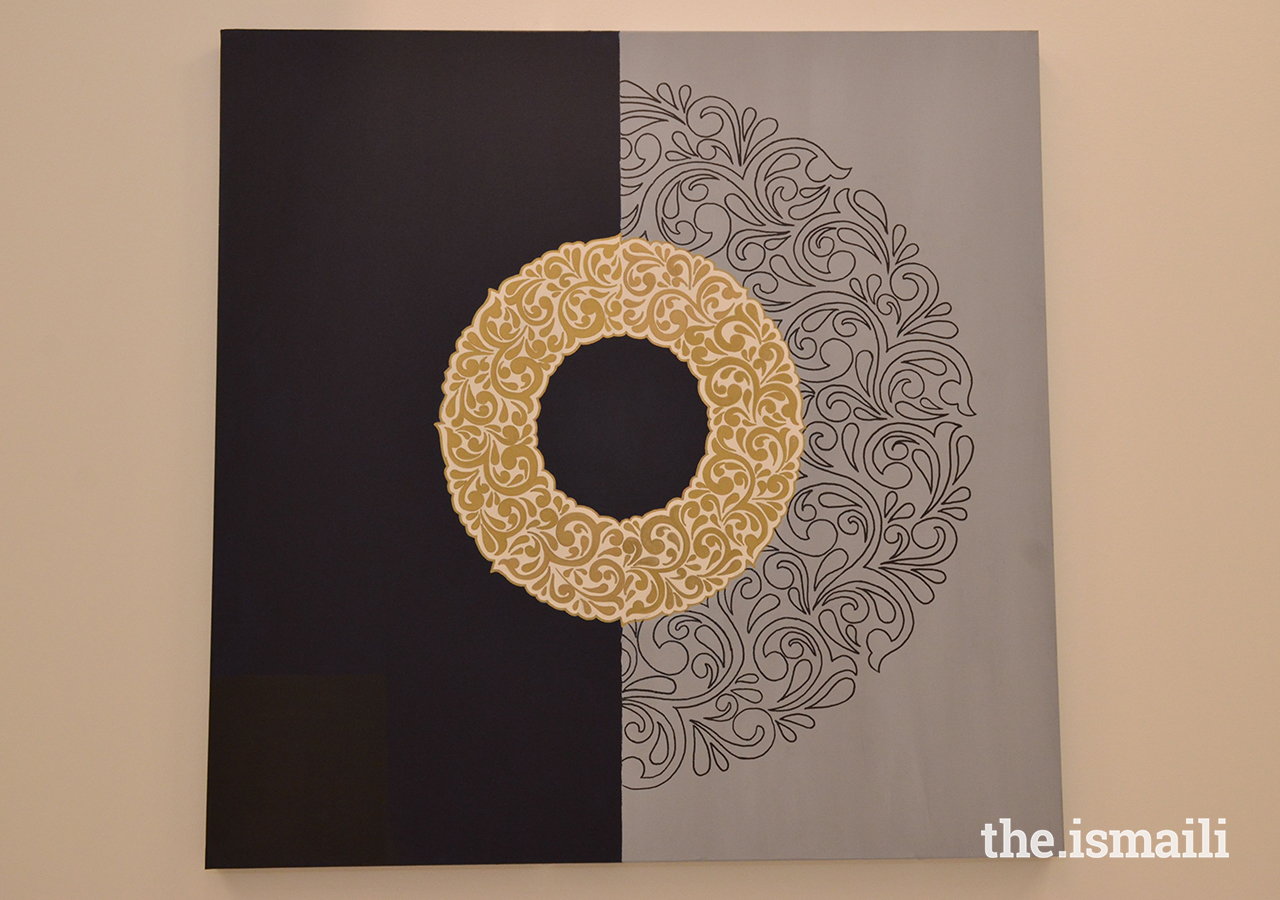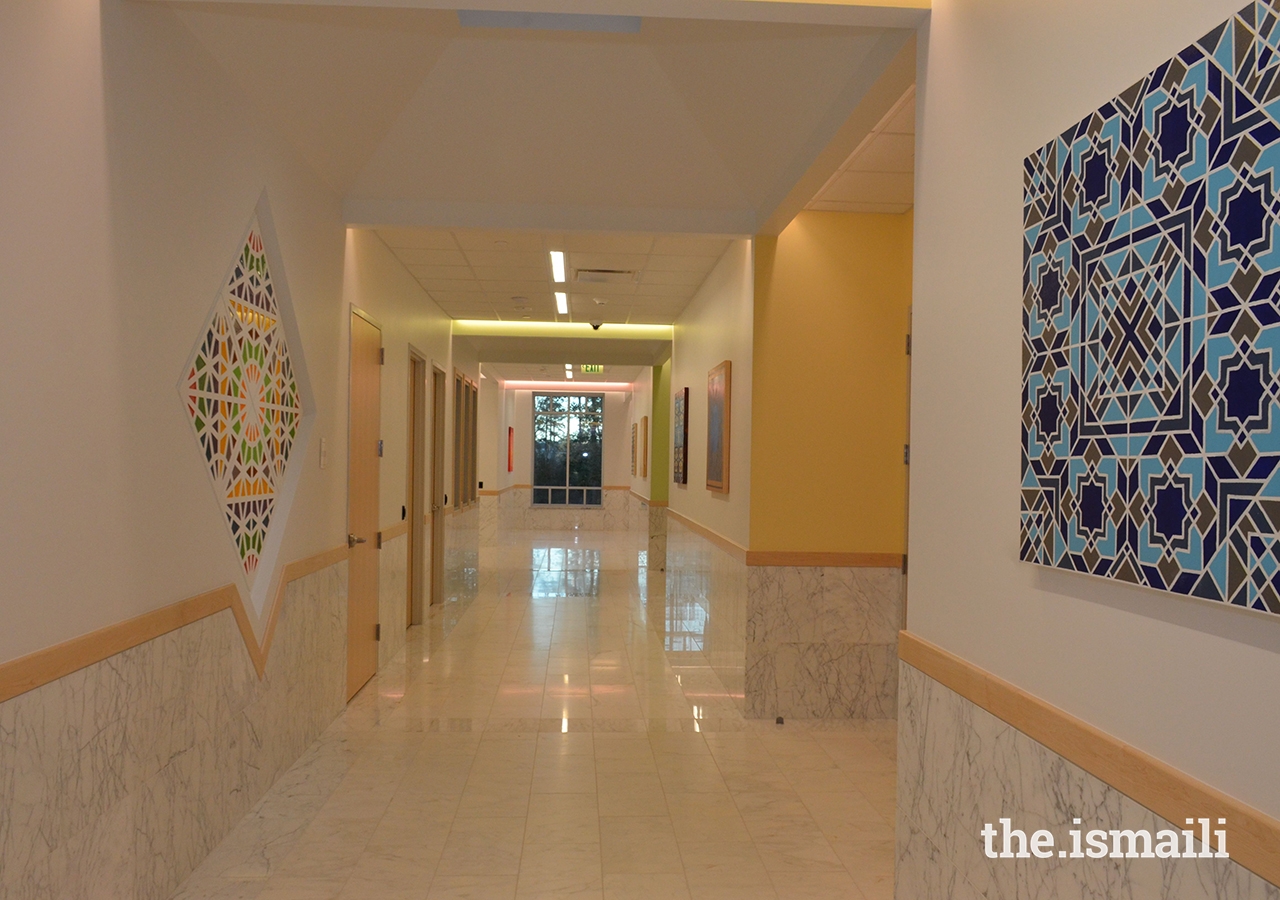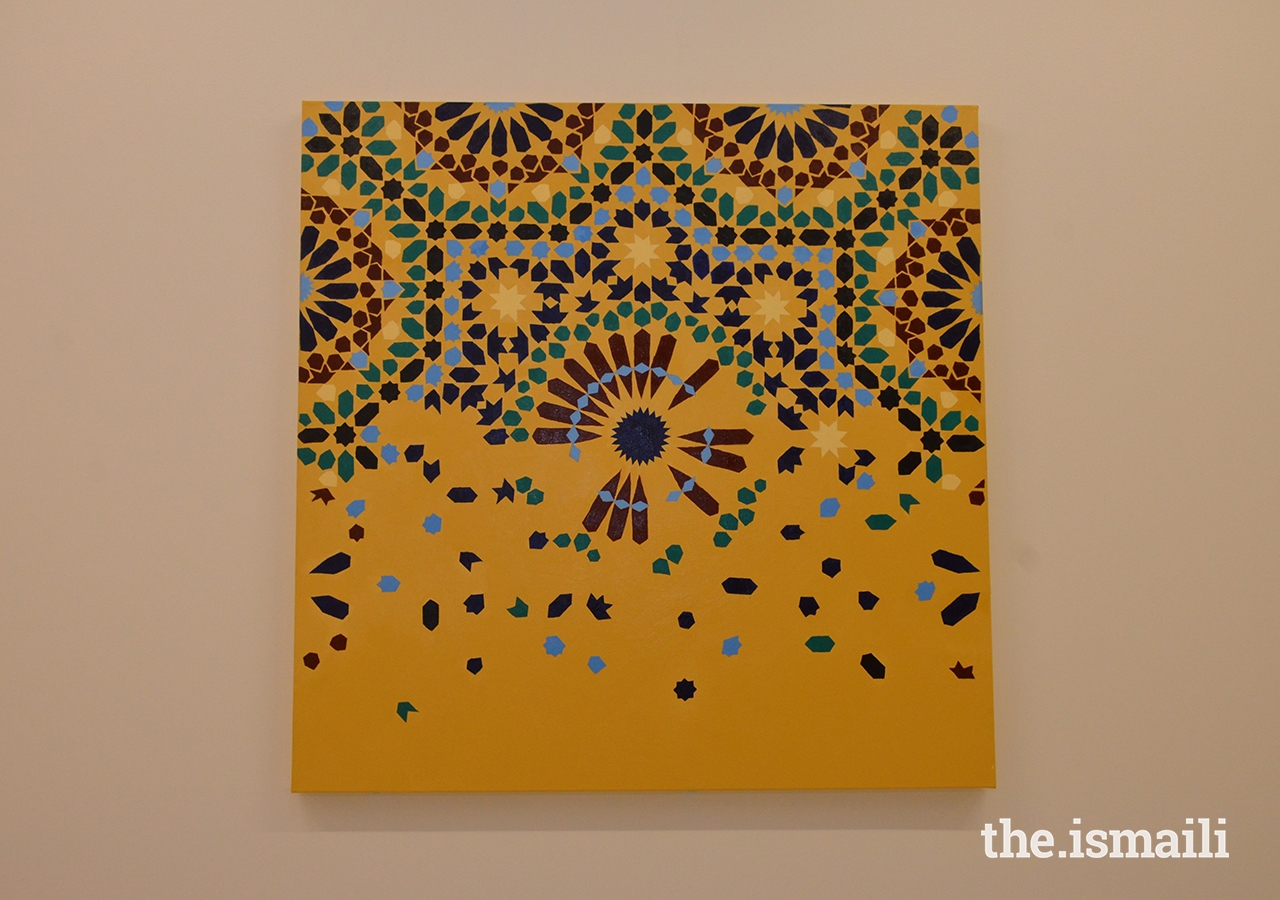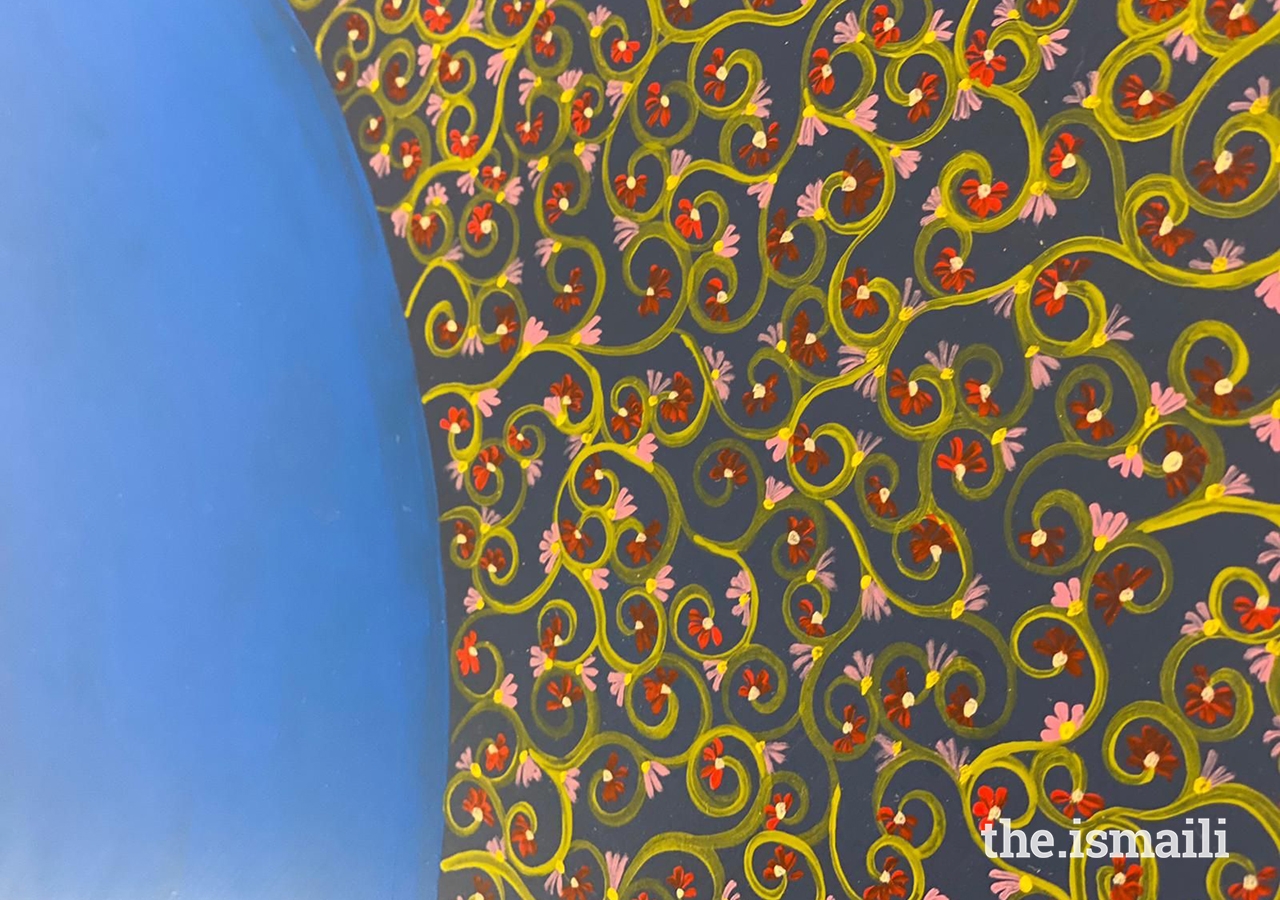Throughout Islamic history, geometry and pattern have played an essential role for Muslims around the world, particularly when expressing faith and devotion. The art exhibition, In Search of Illusion, which has been on display at Spring Ismaili Jamatkhana in Texas, uses geometric patterns to elucidate cultural meaning relevant to a specific time and place, with implications for broader application.
In Search of Illusion opened alongside the newly built Spring Jamatkhana, prior to the coronavirus pandemic. The primary geometric pattern used in the Jamatkhana design is inspired by the styles first developed by early Muslims in north Africa, who later moved into the Iberian peninsula. The exhibition itself is located outside the Jamatkhana’s Early Childhood Development Center (ECDC) and Religious Education (REC) classrooms.
Curated by Fahim Somani, the show features the works of nine artists: Salman Abdul, Afreen Ali, Muniza Ali, Jalal Gilani, Zainab Khuwaja-Ali, Nizar Macnojia, Ruhee Maknojia, Rifaa Tajani, and the curator himself. One of the featured artists, Afreen Ali, currently works as an architectural and graphic designer. At the outset of her studies, she would often explore the materiality of shadows and light in order to discern the architectural quality of a room. Influenced by her faith, Afreen’s approach to art and architecture is mindful of nature and its relation to the Divine. She views architecture as a tradeoff in which the designer must deliberate aesthetic form versus functionality and environmental consequences.
afreen_ali.jpg

In contrast, the visual arts are a method of expression, without regulation or need for restrictive considerations. For Afreen, creating art is a means of breaking free of social constraints and expressing herself without restriction. She hopes that in the future, we will one day look back at this time and recognize it for our artistic talent and cultural values.
Comparable to Afreen’s desire to consider the environmental impact that buildings have on the planet, the Spring Ismaili Jamatkhana is built with a similar thought process in mind. It is an environmentally-friendly building that keeps sustainability at the forefront. Outside the building, two large water tanks capture up to 5,000 gallons of rainwater each. That water is then recycled and used throughout the building. These measures are in place with the hope of reducing the Jamat’s carbon footprint on Earth.
Another artist, Nizar Macnojia, is a professional artist who strives to create work that embodies the compassion and bond the Jamat has for each other, thanks to the link they share with the Imam-of-the-Time. As a husband and father, art plays a central role in Nizar’s family life. In the past, he has made paintings of his teenage children as a way to spend quality time with them. This process becomes a way for them to share their family values and promote conversations of faith and spirituality in the home.
nizar_macnojia_2.jpeg

The arts allow Nizar to unpack his thoughts and feelings, layer by layer onto a surface, through his paints. His process of creation enables him to understand himself better and, as a result, create spontaneous pieces of expression. He views art, similar to meditation, as a practice that can aid in the pursuit of spiritual enlightenment. He hopes that each onlooker will interpret his art in a way that leads to discussion and debate, propagating interconnectedness within the Jamat.
muniza_ali_2.jpeg

Two other artists featured in the exhibition are Muniza Ali and Salman Abdul. They are siblings and come from a family of creativity. While Muniza is an ECDC teacher and business analyst currently building her own business, her brother is a weekend REC Principal at the Spring Ismaili Jamatkhana. Both try to use art as a way to connect with their students in their classrooms in a more personalized way. As a result, Muniza and Salman often find students asking them questions about their art.
This unique exhibition opens doors and encourages students to speak more candidly with their teachers. Muniza sees the process of making art as a way to detach from the stress of day-to-day life. It helps her take a step back before returning to life’s more demanding responsibilities. The calming effect Muniza feels from painting allows her to connect more closely with her ECDC students as well as the tranquility she feels through the practice of her faith.
Lastly, Fahim Somani, the curator of the exhibition, is an entrepreneur by profession and an artist by passion. He believes that art is a process, a way to discover oneself. He says that “art is an emotional journey for me; it empowers me to express my emotions on a canvas... When creating artwork, I feel at peace.”
As the curator of the exhibition, Fahim hopes that the Jamat will find an appreciation of the artwork and a willingness to enlighten themselves about the history of Islamic art and architecture. This exhibition is the first of its kind hosted at a Jamatkhana in the United States. The show is a unique opportunity for members of the Jamat to initiate dialogue and to question the meaning behind the various works on display.












